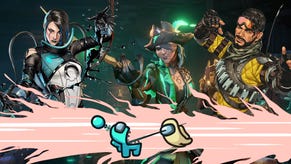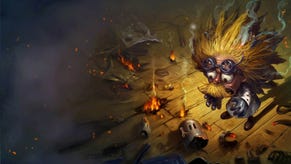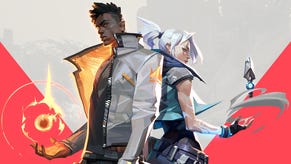Land Of The Free: League Of Legends
This article is the first in an ongoing safari through a range of free-to-play games of all genres.
Relax. It’s ok. There’s nothing to worry about. Just take a seat, get acclimatised, perhaps browse the store for a little bit, we’ve got this. We’ll take care of everything, and the thing you’ve got to bear in mind is that this is about you; we’re here to make your life easier in every way, because hey, you’re the one playing the game, after all.
That’s League of Legends’ UI, talking to me in the sultry tones of an air stewardess that’s been in the job enough to learn how to get you comfortable, but not long enough to stop caring and grow embittered and cruel. More legroom, sir? Indeed. Except League of Legends, despite being Free to Play, isn’t the Easy Jet or Ryanair of DOTA clones. This is the premium service, right here, and it starts from the moment you first load the game up. All of the superfluous garbage has been torn away and rolled up into a ball, before being tossed into an bin, leaving you with a stripped down, super efficient experience that lets you just get on with playing the game.
Like it’s genre-brethren, League of Legends features the patented three-paths approach, each of them lined with turrets and fed an unending torrent of minions. It’s your job to accompany those minions and let them destroy the towers, before eventually attacking the enemy base. Of course, there’s just as many big bastards trying to do exactly the same thing. It’s all about managing priorities.
My main problem with Heroes of Newerth wasn’t so much the acidic community as the reason they were quite so affronted by anyone who didn’t know the ins and outs of the game. Because each game starts your champion at level 0, and they then level up through killing minions and other champions, every single one of your deaths is like a buff to the other team providing them with experience and money. So having a bad player on your team wasn’t so much hampering because of the lack of skill, but because they could be farmed by the other team, wildly unbalancing the game. It’s somewhat understandable why some people might have got angry with new players.

League of Legends has managed to sidestep this issue through a few startlingly clever moves. Firstly, they provide a decent tutorial, allowing you to understand the mechanics of the game without playing with anyone, so you can learn how to play without ruining anyone’s game. A marvel. Also, they’ve got a matchmaking system that actually works to keep experienced players away from those new to the game, meaning you never feel quite so actively negative in regards to your team’s progress.
And the game itself is undeniably charming. Each character has a few paragraphs of backstory if you care to dig that deep, but even ignoring that they all have a striking visual style, from the cute to the creepy, and everything in between. Somehow it doesn’t feel out of place to have a huge purple guy dressed like a CEO attacking people with a briefcase. Mainly because if you look at a fifty foot giant purple businessman with a militant briefcase the wrong way, you’re going to get crushed under the corporate heel.
Getting into the games themselves is as close to a joy as a lobby can ever be. Constantly windowed, the launcher allows you to team up with friends in a lobby while at the same time browsing the shop, tweaking your upgrades or spending points. It figures, correctly, that you only need to be in full screen when you’re, y’know, playing the game. The rest of the time, it’s there to be convenient. At no point does it bog you down with opening or reopening windows; move onto something else and the others will minimise, allowing you to open them back up at the click of a button.

What all this means is that you spend your time digging and exploring around the game, rather than being bored and waiting for a match. It’s useful, then, that League of Legends is quite so broad. When presented with a game of this sort, there’s often an utterly overwhelming flood of information. You’ve got your heroes, of which League of Legends has upwards of fifty, and then they’ve all got a unique set of powers. On top of that you’ve got a variety of skins for each hero, and runes and masteries, both of which have incremental effects on your passive stats like attack rate, mana regen, armour, health, health regen, ability power, ability cooldown, and ohgodsomanythings. Like I said, overwhelming.
But, without insufferable handholding, Riot Games have managed to make it so that you never feel frozen by choice. The champion select, for instance, provides you with about ten champions at any one time. They’re cycled on a weekly basis, with the champions getting selected based on ease of play and how often they’re picked. Eventually they all get a look in, meaning that you can find your favourites without having to lay down any cold hard cash.

Which all ties into the almost startlingly clever way they’ve implemented the microtransactions. The game has two currencies, Riot Points and Influence Points, with the former being the paid for variety, and the latter earned by playing matches. Almost everything can be bought with either, although the values are clearly skewed towards purchasing with Riot Points. Which is fine, because it means that you can work towards either goal, and you’re never going to feel like content is getting cut off from you because you’re not willing to pay. You’ve just got to earn it.
It seems like this would be one of the smartest ways to introduce microtransactions. Rather than giving paying customers outright better stuff, just allow them to jump the queue. Save them time rather than cutting off your dedicated players, and everyone is going to be happy. It removes the ‘us vs them’, and no one likes segregation.

It comes together to create an environment where you’re lusting after specific heroes more because of their character and aesthetic than their specific powers, because they’re all pretty well balanced against each other. Of course, some are more tank-oriented, and others support, with ranged and healers mixed in, but they can all hold their own, meaning that you’re free to allow yourself to be seduced by a character, rather than a stat. And, with none of them getting locked off outright without paying, you can work towards your goal of unlocking them permanently, and then their skins, and then everything else.
Since launch there’s been a near constant stream of new champions, new skins and new things to fiddle with, meaning that even if you could buy everything available right now, you’re not going to start earning points in vain. It’s gaming as a service rather than a product, and for Free to Play, that sounds like exactly the kind of thing that’s going to work. To match the steady trickle of money, they’re going to provide players with a steady trickle of content. Which is probably something I’m going to ask them about in the interview, due up next week.
League Of Legends is free-to-play, and out now.








